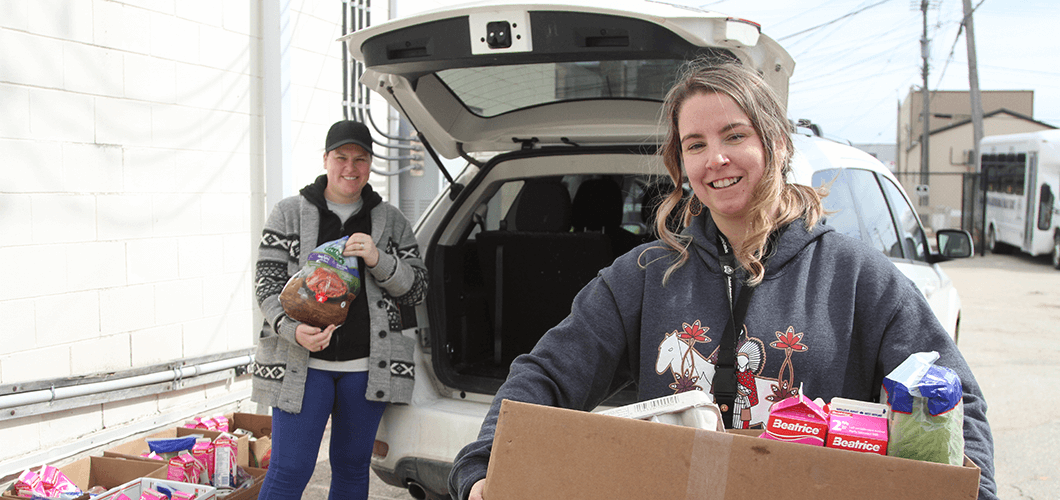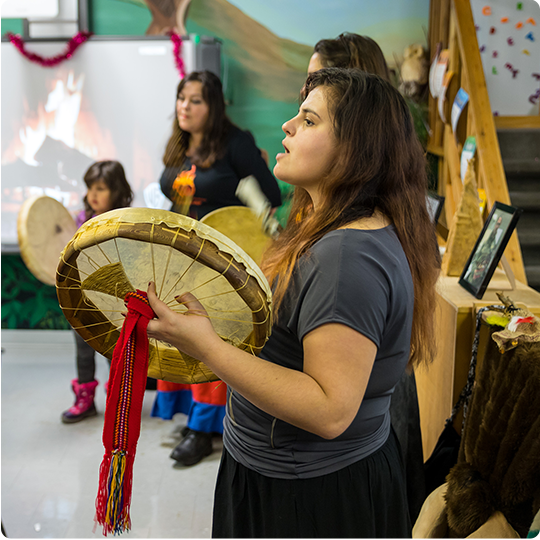
VITAL SIGNS
Overview
Vital Signs is a community check-up, a way to measure the vitality of our neighbourhoods and to learn where we are strongest and where we need to improve. Our current Vital Signs Report was completed in October 2025.
Vital Signs Technical Report 2025 -data sources and further information
The latest Vital Signs tracks ten core indicators of a healthy community. They are:
10 Key Issues
1. Indigenous Community
Our region is located on Treaty One Land, and is the traditional territory of many Indigenous peoples, such as the Anishinaabeg, Cree, OjiCree, Dakota, Dene, and Red River Metis. Over 22 percent of our region's residents identify as Indigenous, and Elder Ruth Christie reminds us that without truth, there is no reconciliation. Programs like the LSRCSS's Anishinaabemowin language program are laying the groundwork to serve generations into the future.
2. Health & Wellness
Our region has a high rate of physicians per capita, and offers support systems such as the Rapid Access to Addictions Medicine Clinic. Still, we are seeing a rise in dangerous drug supply, and self-reported mental health struggles.
3. Youth Engagement & Education
Vital Signs was made possible because youth in our community joined the conversation very early. Groups like Promoting Aboriginal Student Success (PASS), Lord Selkirk Education Centre, and Gaynor Family Regional Library are hard at work to support the wellness of youth throughout the community with relationship-based engagement programs and education opportunities.
4. Housing & Shelter
The 2018 Report showed that housing was a looming crisis. The 2025 Report explores housing through four key perspectives. For Manitoba Harm Reduction Network's local peer advisory network, the lack of a homeless shelter perpetuates harmful cycles that can result in health crises and risky behaviour. Nova House has greatly expanded its transitional housing spaces, and can now support up to 11 families with moving towards long term housing supports, and Habitat for Humanity continues to offer a pathway towards homeownership. Aging adults now face housing challenges, as there are few developments that fit the needs for those looking to age-in-place.
5. Food Security & Access
The affordability of food has become a daily concern for many, and forces trade-offs between other key necessities such as housing, childcare essentials, and nutrition. Groups like the Selkirk Food Bank, Our Daily Bread Soup Kitchen, Rotary Club, and many regional food hamper programs are working to fill the gaps.
6. Environment
The community has had a long history of supporting environmental issues, with the City of Selkirk aiming to reduce its corporate GHG levels to net-zero by 2030. Youth are eager to do more, and want to see co-operation across all municipalities to make a bigger impact.
7. Transit & Active Transportation
Our region includes a base of rural communities, and reliable transportation is a key factor in accessing services such as medical and financial appointments. While regional transit solutions needs more exploration, the growing network of active trails increase youth's ability to safely get around.
8. Recreation, Culture & Heritage
Although the COVID-19 pandemic affected everyone's ability to participate in recreation and cultural events, the region continues to have strong institutions. Gaynor Family Regional Library's check-out rates has stayed steady, where the provincial rates have dropped by a third. St. Clements Activity Centre has been 20 years in the making, and is nearing the finish line.
9. Transit & Active Transportation
Safety continues to be a major concern for all community members, and the local RCMP detachments have been working to deal with the root causes of crime. "Our strategy has to be connecting people to support services," said one officer. " We relish a chance to make a difference to identify problem areas and behaviours in the community before they get serious."
10. Income & Work
For many people, finding secure employment in our region has become a significant challenge. Some international newcomers struggle to find employment in their field that recognizes their professional experience and credentials. Shift workers with young children need after-hours and weekend childcare. Organizations like Regional Connections and the MMF's new Little Infinity Child Care Centre are here to help.
Read the full report, share it with others, and keep it handy. We know that if we work together towards common goals we can continue to be a smart and caring community that is Here for Good.
Past Reports

Start My Own Fund
What are your hopes and dreams for your community? Let’s talk about how SDCF can help you start your own fund.


Your Gift Lasts Forever
We carefully invest your donation and use only the interest it earns. So you gift is here for good, working hard and giving back year after year.
